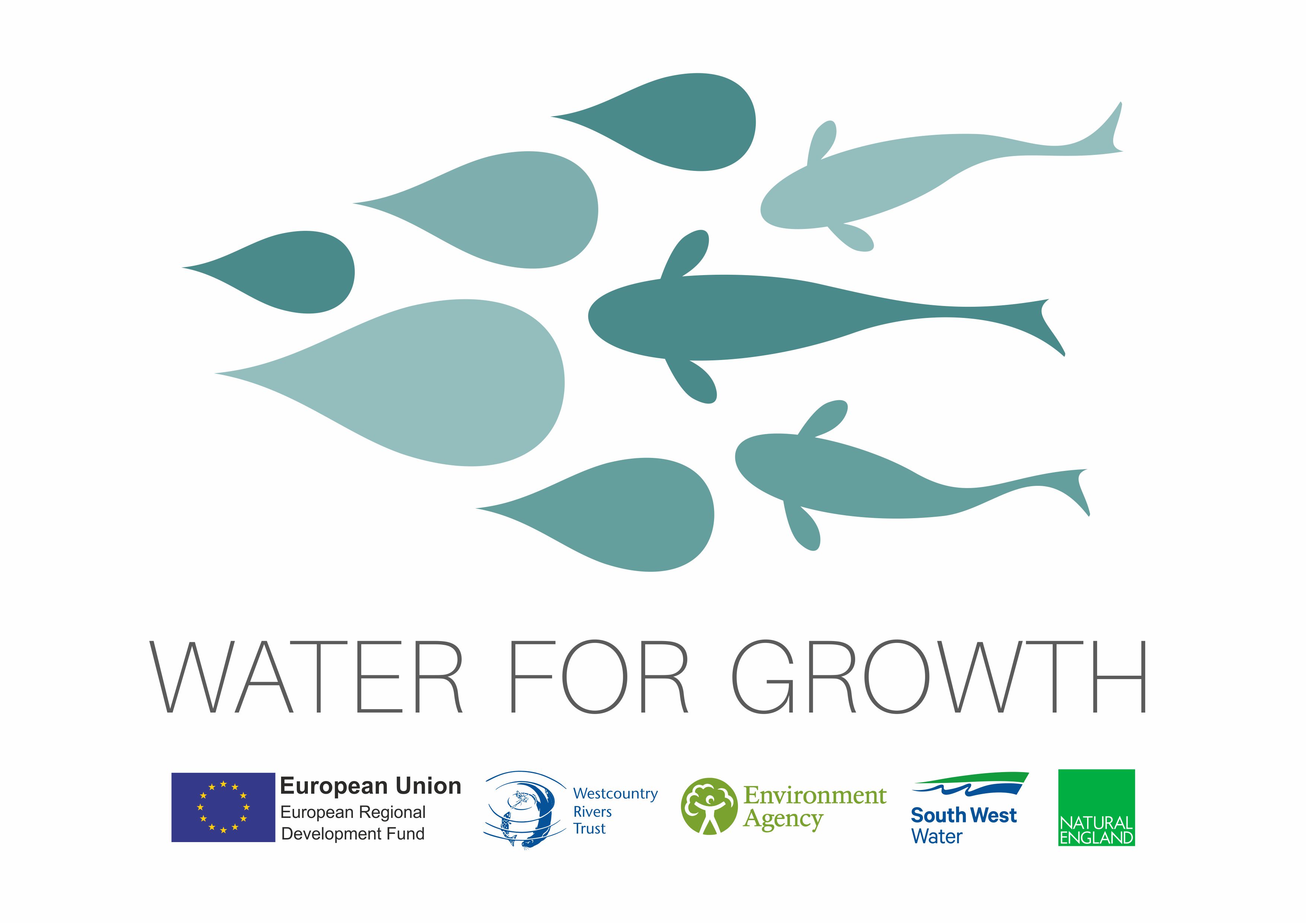
Water For Growth
One year in!The 15th of February 2017 saw Westcountry Rivers Trust, Environment Agency, Natural England, Scott Mann MP, TV and radio crews, convene on Camelford park on the banks of the river Camel to officially launch Water For Growth. One year on and the full significance of this location has come to light, for good and for bad. Little did we know that the Camel would show a “catastrophic” drop in juvenile salmonid numbers, forcing an emergency byelaw to be imposed.
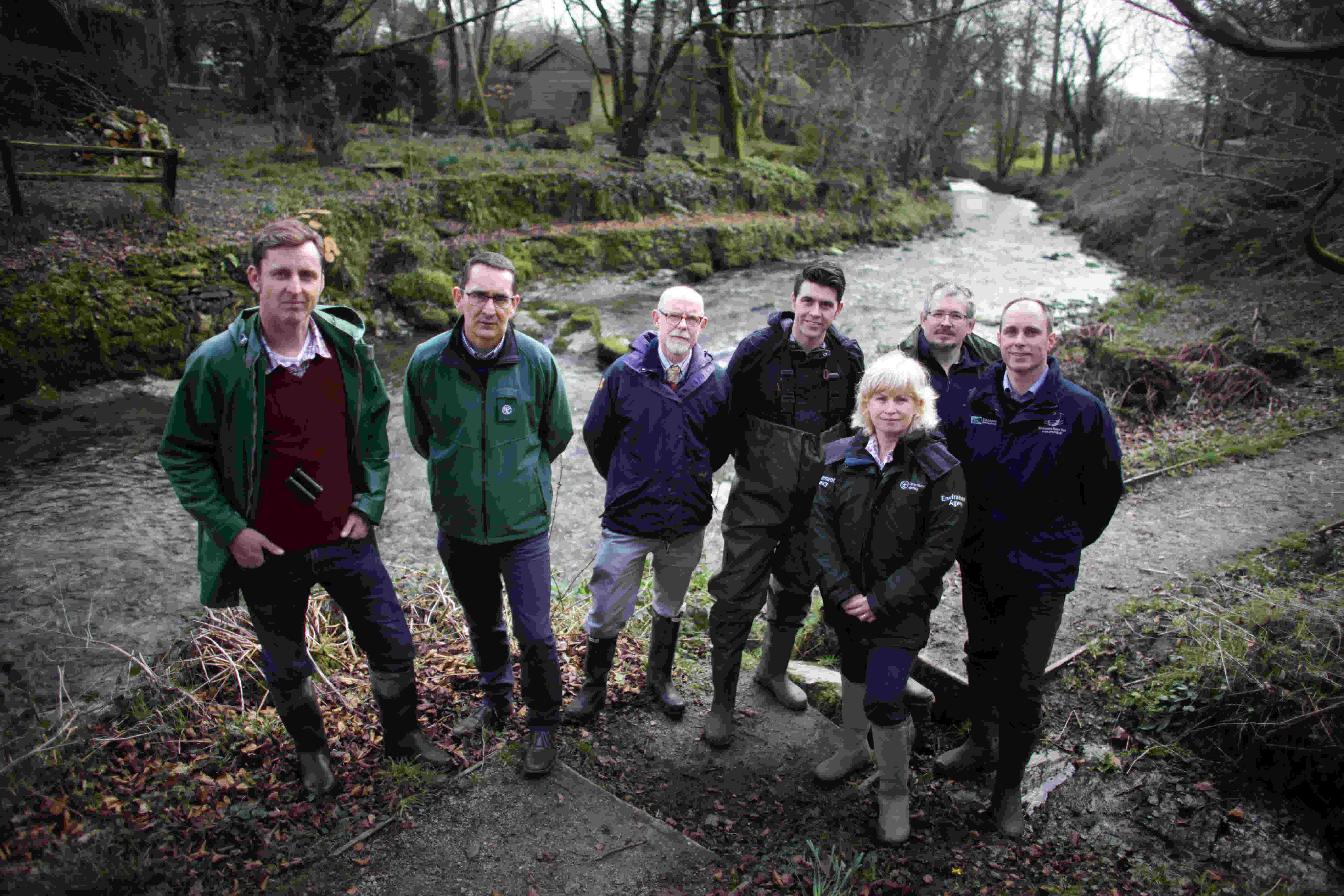
Water For Growth (W4G) was designed to sure up and increase migratory fish on the rivers Camel and Fowey, this data, arriving just nine months in, has reinforced the need for this project.
Work officially began on the first of February 2017. Barriers and neglected habitat were identified with pre-existing walkover surveys and information provided by our partners and local angling associations. The project scope required the hiring of key staff, creating a new team within WRT. This
Barriers to fish migration formed the core of the project, with major weirs being present in numbers across both catchments. Over 30 were identified initially with more and more discovered and despite a few passing assessment, we are currently looking at nearer 40 structures that might need attention.
Attention is a deliberately vague term. Alteration or removal of a weir is a phenomenally complex challenge. To start, there’s the matter of ownership. Some are owned entirely, where as others are shared equally by each opposing riparian owner. Other stakeholders inevitably come out of the wood work as planning progresses. Perhaps a leat feeds a lake or pond, a hydroelectric plant… Often the impounded water above the weir forms a favourite pool for anglers.
These conversations and permissions are essential simply to assess the structure, continuing these relationships throughout as the project progresses into design, planning and environmental consents, any and all permits necessary to complete the works.
Walking the catchments early last year the team spotted weirs, debris dams (the accumulation of flotsam trapped behind a fallen tree or other obstacle), blown banks and potential juvenile habitat and spawning grounds. Potential being the key word as the historic coppicing of river banks has long since ceased and the resulting thick, suffocating canopy of regrowth has in many places formed a tunnel of shade. Light on the river is essential to produce good stocks of salmonid fry and parr (the two stages of juvenile development that live within the flowing river). The light helps macrophytes that in turn feed the aquatic invertebrates that growing salmon and seatrout need to grow and survive. Issues were noted and built into our developing programme.
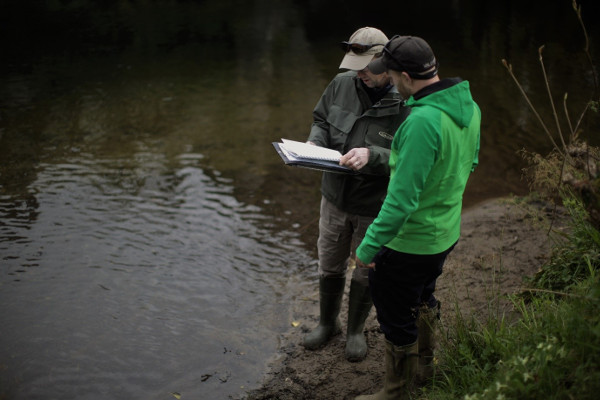
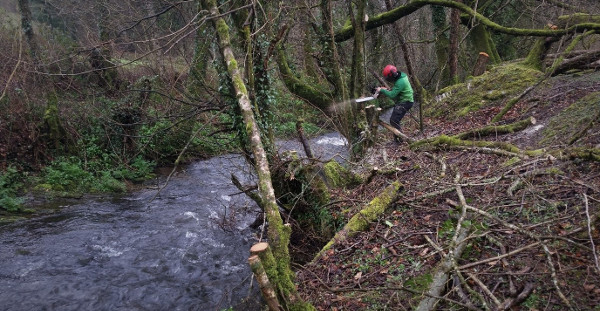
After what felt like a painfully long time, ground was broken. Well wood was cut in the first instance as work on a stretch of the St Neot, a tributary of the Fowey, began. Riffles were opened up by singling out old coppiced stools with some of the wood reintroduced back into the flow, tying it in safely to the bank. This woody debris generates better flows helping to clean the gravel, simultaneously creating refuge areas for juvenile fish when the stream is high.
The first barriers we tackled were arboreal too. Ironically it was a visit to survey one of the Camel’s most high priority weirs that uncovered a tangled mess of fallen trees, filled in with wheelie bins, plastic bags and other detritus. With no significant flow through, it was assessed as mostly impassable and work was immediately programmed to remove it. Lying within a Site of Special Scientific Interest (SSSI) this mass of fallen trees could not be removed without consultation and consent from Natural England. As an official partner on W4G they were extremely helpful and allowed us to undertake the work on the proviso that we cleared sufficient passage but left debris for refuge and diversity.
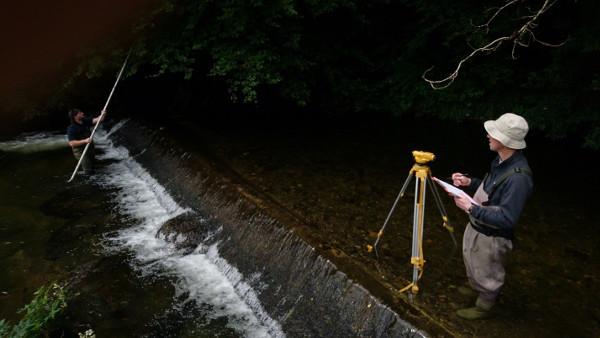
As ground work began to happen, so the pace of the project and the year picked up; rounds of procurement for weir assessment, work programmes and the new angling mobile application that forms the third and final piece of the W4G pie.
Soon enough summer had come and the juvenile survey season was upon us. 40 sites on the Fowey and thanks to the Environment Agency’s six year cycle on the Camel, we supplemented their survey with 15 more. It was only a few weeks into this programme that rumours and whispers of worryingly poor results on the Camel started to appear. By early October it was fairly clear that the numbers would probably require immediate action. Later that month and an emergency byelaw was imposed.
This realisation of the possible state of migratory salmonid population in the Camel took us by surprise but only strengthened the importance of W4G. The separate approaches of barriers and habitat are essential to the survival of existing juvenile populations and increase the amount of adults returning in seasons to come.
All considered, the purpose of the mobile app might not immediately seem congruent with the core river works. Why work to protect salmon or seatrout only to promote the targeting of them by anglers?

Firstly, there is more to Westcountry angling than salmon and seatrout. The weir and habitat works benefit all the inhabitants of the Fowey and Camel. Resident, non migratory trout move up and down the river throughout the year, spawning in the same habitat and often with their sea run brethren. The promotion of angling generally, especially fly fishing for brown trout, has many positives for the river and the surrounding area. Angling provides a significant benefit to the local economy, but anglers also hold an unofficial place as one of the main custodians of the river. Without their detailed, passionate interest; pollution, malpractice, stands of invasive plants and many more problems would not be uncovered or at least would take longer to be discovered.
So the app has been designed to make the process of buying access to a fishing beat as efficient and simple as possible. Reducing the manpower needed to administer it, within WRT and beat owners alike. Promoting angling in a way that appeals to a younger breed of fishers with the goal of maintaining this cohort of custodians into the future.

Supporting the local economy through the promotion of angling goes hand in hand with the direct support we are offering to local enterprises within Cornwall. Liskeard and District Angling Club have received a complete rework of the mapping of their club waters. An interactive digital version, drawn into google maps, allows anglers to navigate too and along beats, while more traditional printable maps have been produced with a clean clear design.
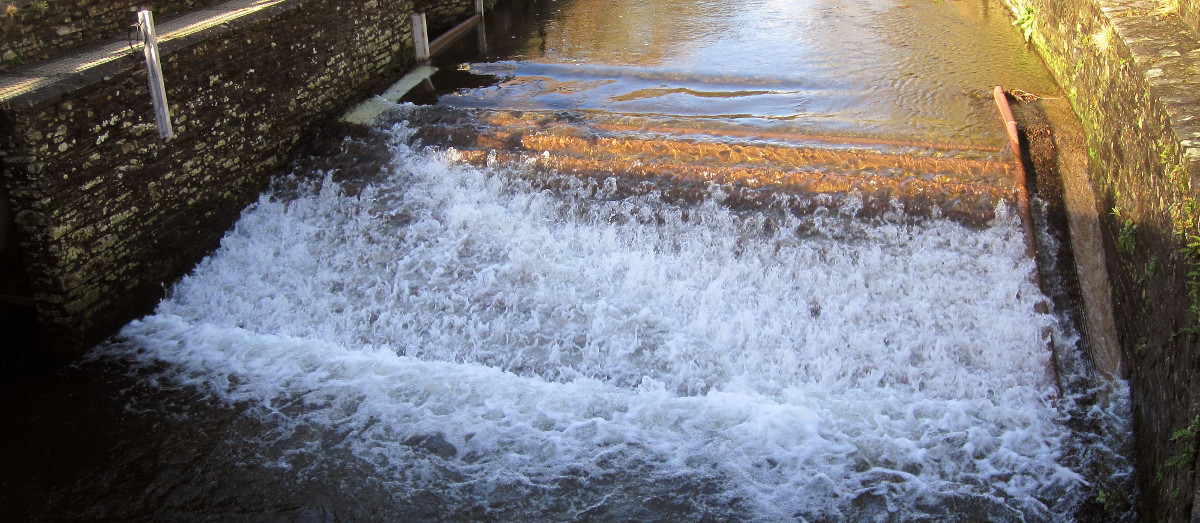
Year one has proved to be quite the rollercoaster. As the Camel emergency byelaw was announced, we were preparing to install an easement on the weir in Camelford Park, right next to the spot where we all met to publicly launch W4G.
This installation improves the upstream passability of the weir by creating an angled path across the face with slower flows.
However, it is the downstream migration of smolts (salmonids that have changed their physiology in readiness for life at sea) that must also be recognised and although a fishpass pre-existed the project, it has been shown to be poor at allowing these essential juvenile salmon and future sea trout from completing their journey to the sea.
Year Two
With a fair wind, all the planning, consent applications, design and procurement of 2017 will allow us to tackle and complete nine structures on the Camel and Fowey.
Our partner the Environment Agency are well on course to undertake works on three of those weirs with the remaining six core sites equally well developed. On top of this, the planning and stakeholder work has begun on a series of smaller and bigger barriers that we are looking to complete in year three.
Trees have been marked up across the county to increase that essential habitat and we will be combining drone surveys to monitor and assess this work from the air giving us the best visual of how the river and surrounding trees have responded.
The app will be going live for the forthcoming season with the introduction of a few new beats that will be “app only”
Three years felt like a long time at the start and almost seemed to get longer through that essential planning period, but all our efforts have built quite the head of steam and I’m sure 2019 will be on us in an instant.
I doubt any of us realised quite how important this project would become in those early days. W4G would never have been conceived if there were no problems to overcome, but the full extent of the problem, on the Camel at least, took us all by surprise.
Thank you to all the partners, the fisheries associations, the land owners, local historians, archaeologists, councillors and clerks… We have had enormous support and genuinely couldn’t have got to where we are without their invaluable time and experience.
